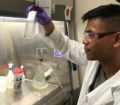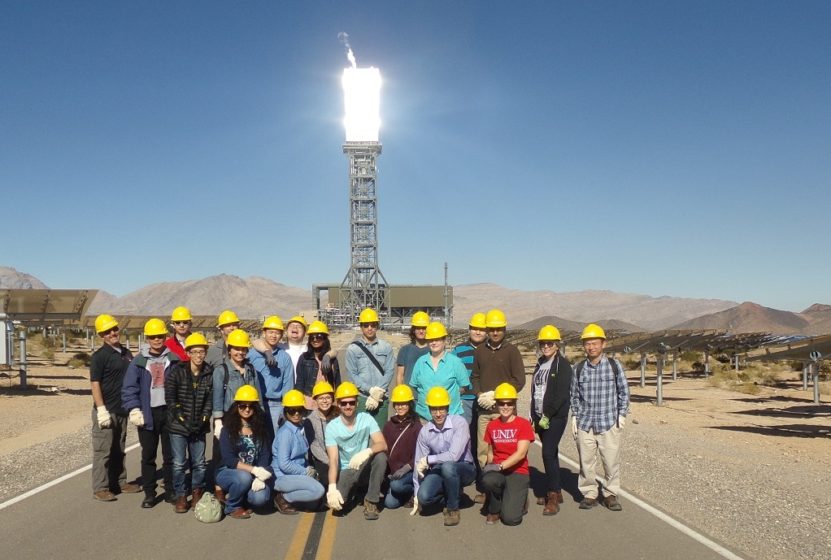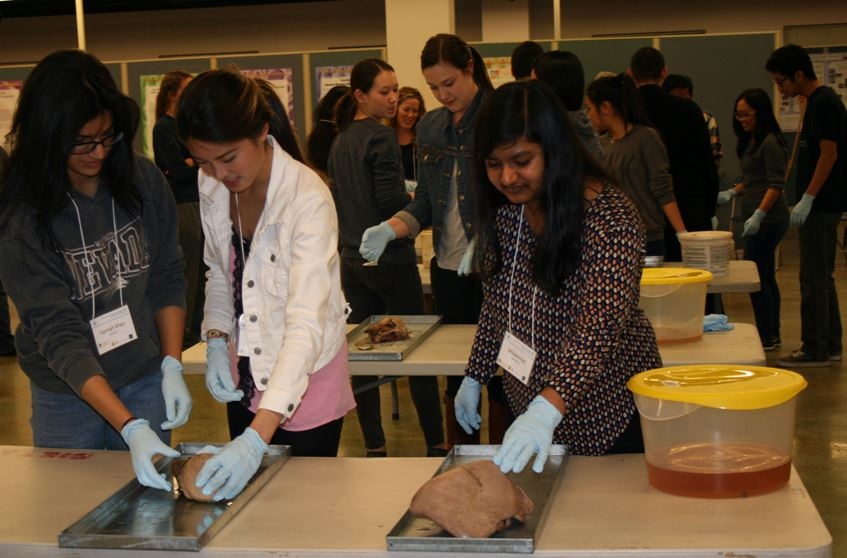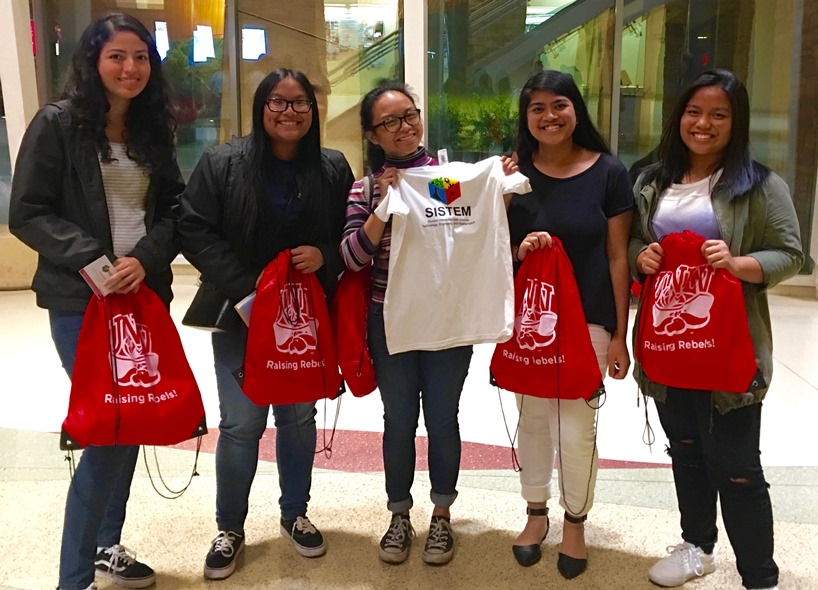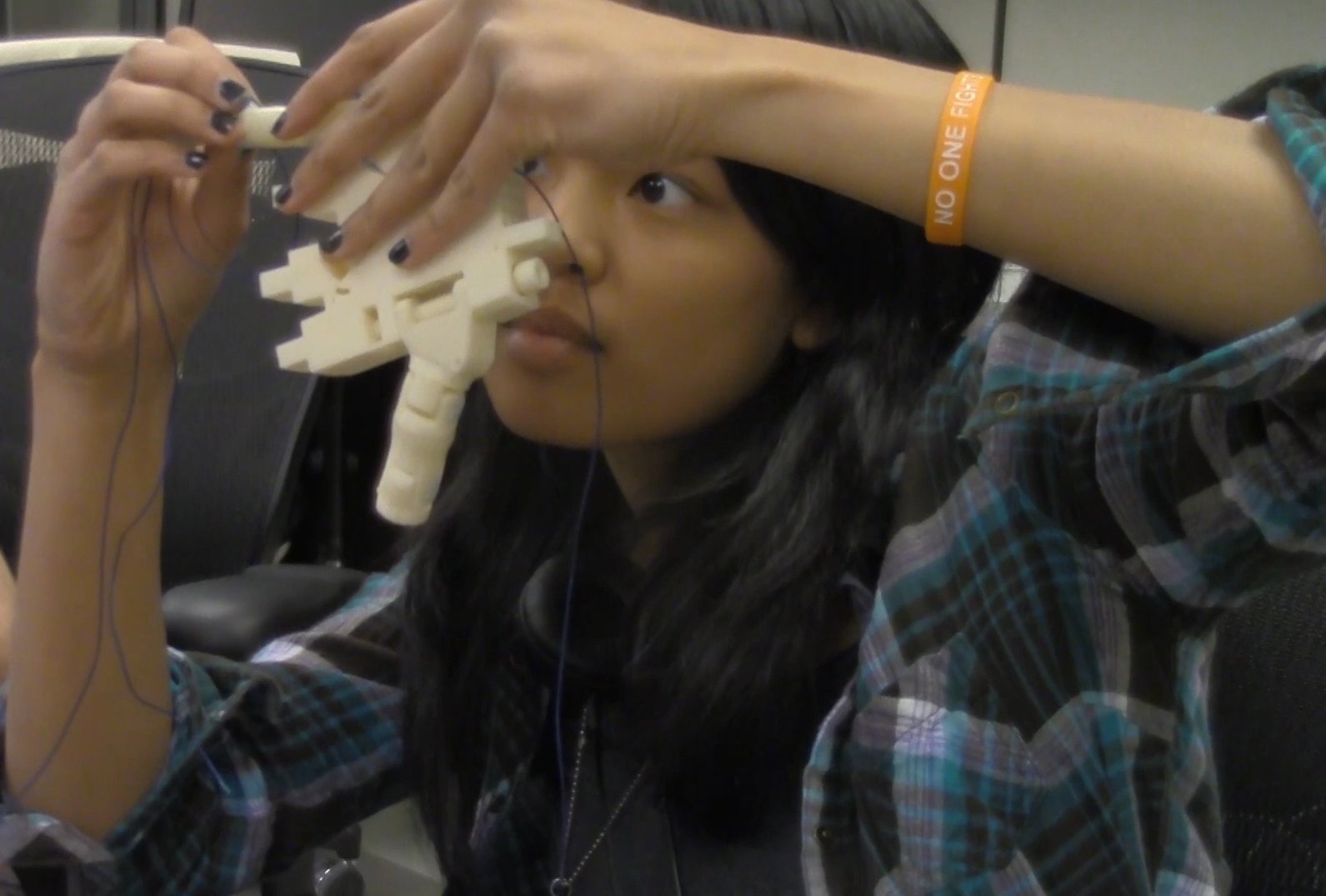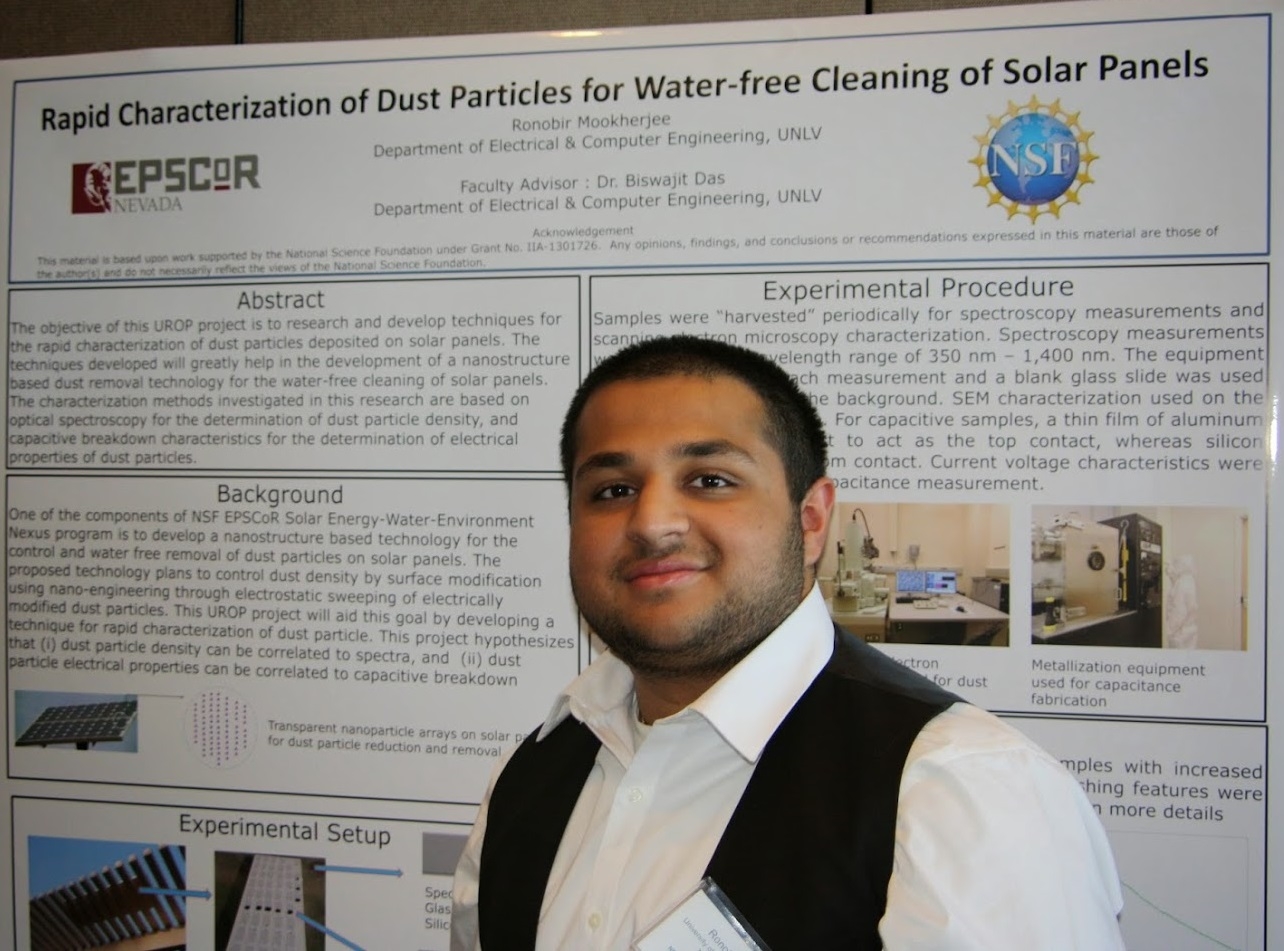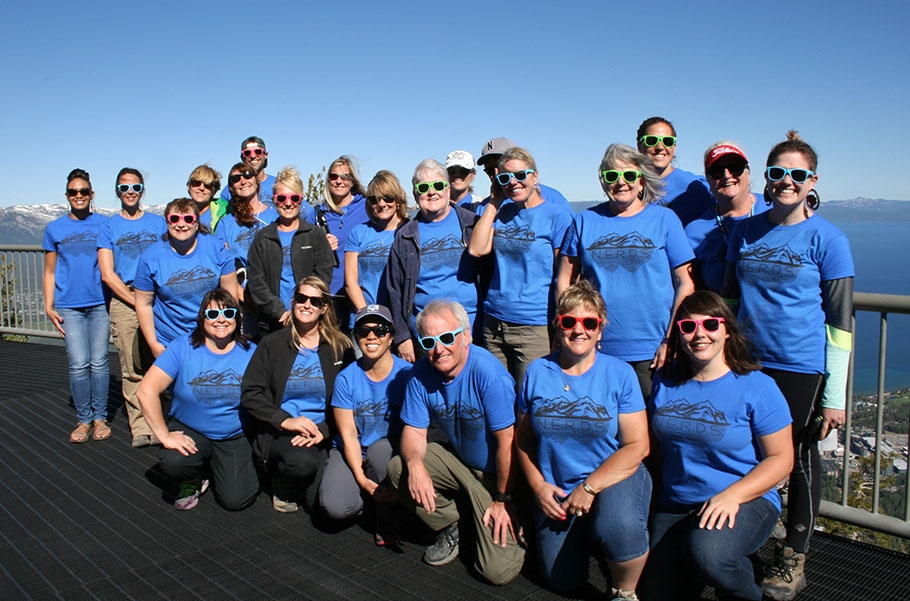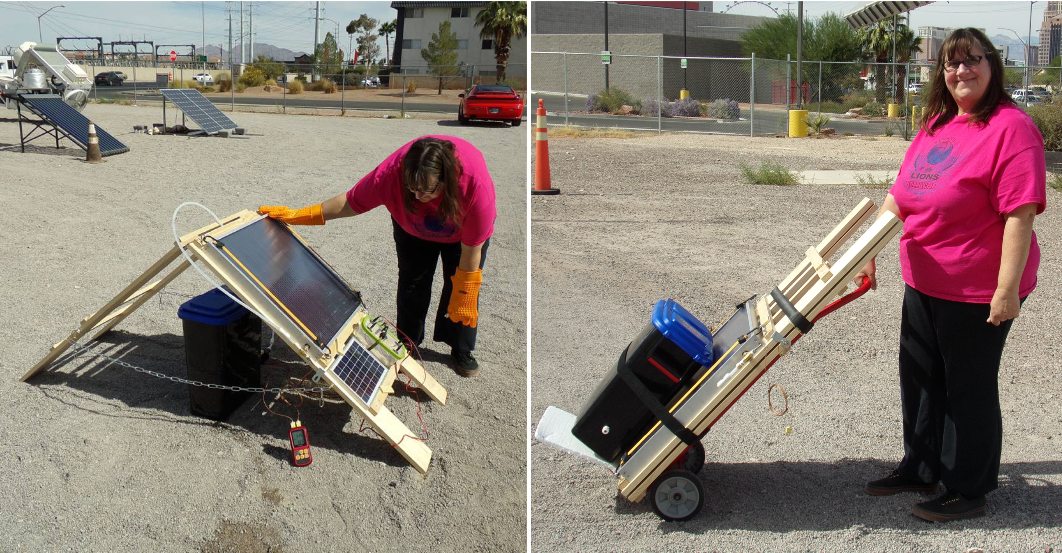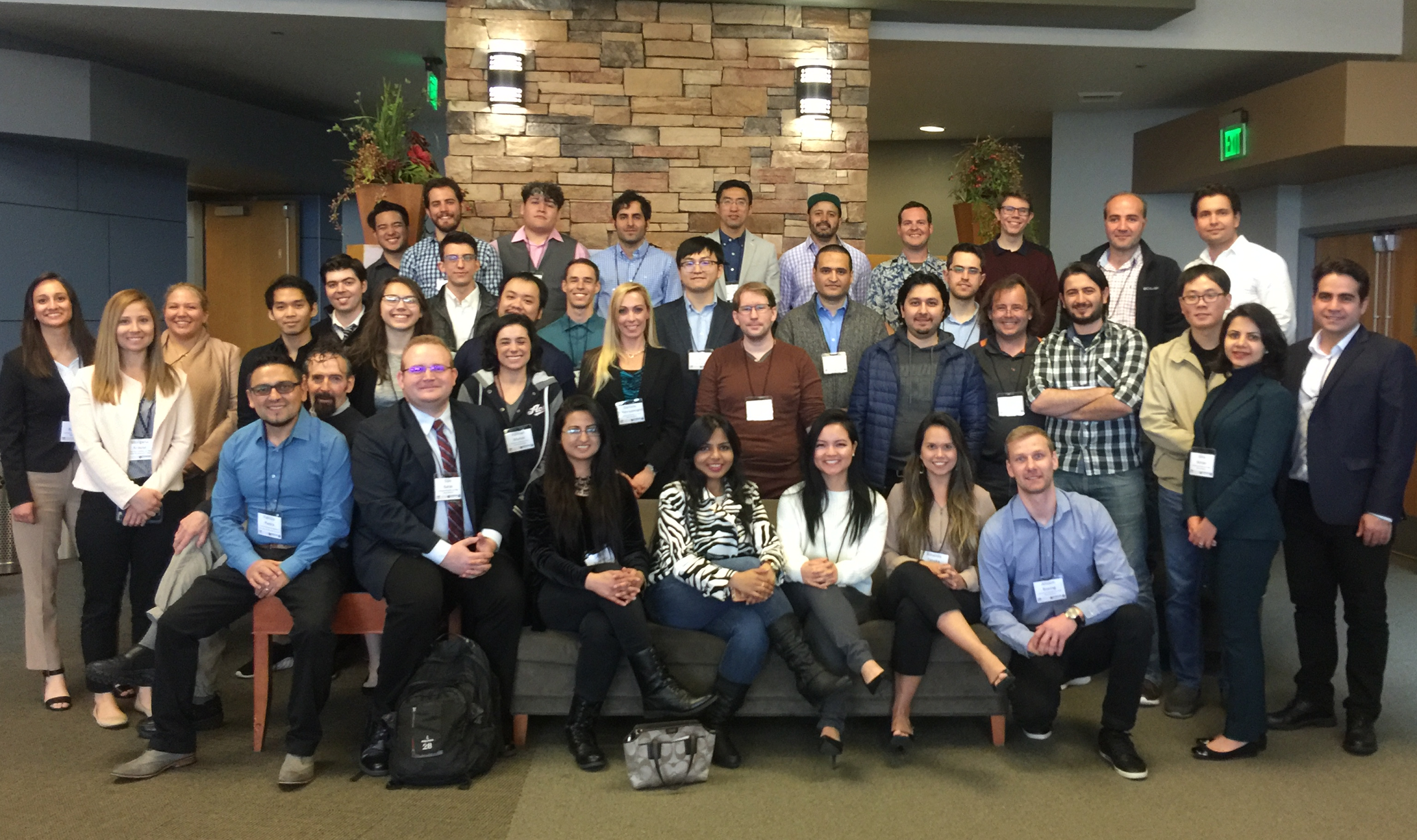Solar Nexus Visits Ivanpah Solar Power Facility
Securing Sustainable Solar’s Future
NEXUS programs develop a STEM workforce to support renewable energy development
By Jane Palmer
November, 2018
The Sun’s rays are fundamental for creating solar energy but securing this clean and renewable energy source for the decades to come requires another essential ingredient: a committed and trained workforce.
Consequently a key goal of the NEXUS project has been to develop a diverse science, technology, engineering, and mathematics (STEM) workforce by creating a pipeline of STEM-trained students, educators, and workers. It’s a goal the NEXUS Workforce Development (WD) program has endeavored to achieve by providing training opportunities and research experience to students in high school, colleges and universities. The program has also provided opportunities for high, middle and elementary teachers to develop their knowledge and understanding of renewable energy concepts so that they can teach this information to their students.
“A STEM workforce is a major state goal and is crucial to Nevada’s economic success,” says Dr. Jacque Ewing-Taylor of the University of Nevada, Reno (UNR), the education workforce component lead for the NEXUS project. “The NEXUS project made a strong commitment to work to develop this workforce through its educational programs.”
The NEXUS WD program isn’t solely focused on training the workforce of tomorrow, however. It aims to educate the entire community about the value of solar energy and science in the state. By creating such an appreciation, it becomes more likely that students of either gender, or any ethnicity will be encouraged to pursue a STEM career in the decades to come.
“It’s not sufficient to educate teachers and students, however. We aim to increase the STEM literacy of everyone in our community, for in doing so, we also build support and encouragement that can lead to a more skilled and diverse workforce,” Ewing-Taylor says.
Catching Them Young
“A concerning factor in the educational landscape since the 1990s is the gap between the number of scientists and engineers entering the workforce and the number of trained workers with these skills that are needed”, Ewing-Taylor says.
To address this deficit educators have emphasized promoting STEM fields at community and state colleges, in addition to universities and helping students get through STEM classes. But the K-12 years have not been targeted as much and the pipeline needs to start earlier, Ewing-Taylor says. “Educational research has shown that if children are not engaged with science by fifth grade, it’s extremely difficult once they get past that age to get them into the science classes, and the math classes that they need to then be successful in college,” she says.
To target the younger age groups, UNR educators started the STEM Career Investigation Program (SCIP), which has been supported by NEXUS for four years. The SCIP program engages high school sophomores, juniors, and seniors in Northern Nevada for six evenings in interactive lectures and workshops given by scientists and engineers from a wide array of specialties.
On any week of the six-week program students might be listening to an engineer from the Tesla Gigafactory, a forensic scientist from the Washoe County Sheriff’s Office, or a university biologist. And each evening session is not just a lecture but involves hands on experience for the students. In addition, all of the speakers, as well as presenting their current research projects to the students, discuss future job possibilities for someone with their degree and area of specialization.
To date, the SCIP program has offered workshops for 118 students from 13 Northern Nevada Schools. Two thirds of 118 students were female and a quarter were Hispanic. The students completed a survey at the end of the course and, each year, their responses showed statistically significant gains in STEM career interest.
2016 SCIP’ers inspecting human organ specimens and learning about careers in anatomy–Jacque Ewing-Taylor
The equivalent program at the University of Las Vegas, Nevada (UNLV), the NEXUS Student Interactions with STEM (SISTEM) program has provided similar opportunities for 137 students over the last two years. Sixty percent of these students were female and more than 44% were from underrepresented minority groups.
Ultimately the goal is to show how exciting a career in science can be, Ewing-Taylor says. “The intention of SCIP and SISTEM is to touch students, preferably in their earlier years of high school, and to help them understand the breadth of possibilities that there are in STEM fields,” she says.
Fall 2016 SISTEM Program Participants–Kurt Regner
Expanding The Reach
Another NEXUS-funded program in northern Nevada also introduces STEM concepts to high school students, but the Science, Technology, Engineering and Math Bilingual Online Peer Sessions (STEMBOPS) program facilitates these students in becoming STEM ambassadors and taking what they have learned to the wider community.
The STEMBOPS program pairs pre-college, undergraduate and graduate students with NEXUS researchers, who act as mentors introducing the students to science and engineering in the lab. The students then make videos about their experiences and the concepts they learn, which can then be viewed by their classroom peers.
The STEMBOPS students don’t just create videos; they also write white papers to show that they have understood the technical aspects of the science. And then, as if these accomplishments weren’t challenging enough, they create the videos in Spanish, as well as English. During the program duration students have created 17 English and 9 Spanish videos on topics ranging from human cells to robots and have written 10 technical whitepapers. The ultimate goal is that the videos will be taken to schools and can also be used to introduce the broader community to science and technology concepts.
“I like to think of it as ‘K through Gray’- that these videos can reach an audience from kindergarten all the way through the community-at-large,” says NEXUS researcher Nancy LaTourrette at UNR. By involving the community, LaTourrette hopes that more parents will spur their children to go into STEM fields.
Giselle Serate, Davidson Academy, working with a robotic hand–Dylan Bowman Photo
Stepping up an age group the NEXUS-funded Undergraduate Research Opportunity Program (UROP) aims to help undergraduate students learn critical research skills in STEM disciplines. Through this program students at any institution within the Nevada System of Higher Education (NSHE) can either apply to do a 10-week summer or 9-month academic year project.
The NEXUS Bright Stars program helps recruit students by introducing them to the possibility of undergraduate research opportunities either at their institutions or at one of the research institutions within NSHE. “Bright Stars allows interested students to ask questions about undergraduate research in a non-threatening, peer-facilitated environment,” says Michele Casella, Education, Outreach and Diversity Administrator for Nevada EPSCoR.
Through applying for this program the students learn to formulate a testable research question and then write a proposal. To help the students, Nevada EPSCoR hosts application-writing workshops at UNLV, UNR, and select NSHE community colleges. A team of faculty reviewers from throughout the NSHE institutions then review and rate the applications based on the strength of the research concept, whether it is possible to investigate in the timeline and the proposed methodology for research. Each year the panel has selected twenty students for summer research and another 15-20 students for academic year research opportunities.
The successful applicants receive a $4000 stipend and the UROP awards are also made to students at NSHE community and state colleges. The final stage of both the nine-month and summer programs is the UROP symposium, where the students present their research to the academic community.
For the students, the program gives them a valuable opportunity to experience what it is like to be a scientist, Casella says. “Undergraduate research is valuable in that it provides students with advanced opportunities in fields in which they are seeking a career,” she says. “These experiences can either confirm or change a student’s career trajectory.”
Ronobir Mookherjee, UNLV, UROP EPSCoR Scholar, 1st cohort Academic Year 2013-2014. Mentor: Dr. Biswajit Das, UNLV
Training The Teachers
Two NEXUS programs take an alternative route to educating students about solar energy by training their teachers first. The NEXUS Nevada Educators Really Doing Solar (NERDS) program brings high, middle and elementary educators to the UNR campus each spring and fall, and takes them out into the field each summer, to teach them about solar power and the links between this sustainable form of energy and the environment.
The goal of the program is to equip these teachers with both knowledge and pedagogical tools that they can take back to the classroom environment. “When you look at the number of students that a single teacher can impact over the course of a few years, it’s critically important,” Ewing-Taylor says. “When you’re a Nevada high school teacher, you’re looking at 30 to 40 students, seven or eight times a day, so you’re reaching hundreds of students a day.”
Summer 2016 NERDS Cohort at Heavenly Summit
Using a different approach, Dr. Erica Marti, who coordinates several workforce development and education activities at UNLV, has pioneered the NEXUS Solar Kits project. The centerpiece of this project is the Sol Traveler, a portable solar energy classroom kit, which can be used to teach both engineering and solar energy concepts to high school students in Nevada.
Each solar classroom kit fits into a neat portable carrier that teachers can easily transport to their classrooms and into outdoor sunny areas. The kits contain photovoltaic panels and all the materials necessary to turn the Sun’s energy into electricity that can power a pump to move water through a thermal panel for solar water heating.
Marti’s initial emphasis is on training the teachers on the concepts of engineering design using the solar kit and the teachers can then tailor the kit to their specific classroom needs. The teachers go on to use the kits in their classrooms to teach their students the basic principles of engineering design and solar energy concepts.
As of 2018, 18 teachers have trained in using the kits. With each educator teaching 200 students a year, the program has the potential to educate 3600 each year on solar and water topics. Marti hopes that these experiences will give the students an insight into careers in solar energy or engineering, making them interested in a future career in these fields. “I would like there to be a very easy or very visible pipeline for students who want to work in solar energy, so that they know what the field entails, how to get educated and how to get a job in the community where they grew up,” Marti says.
Solar Kit in Action (left) and Ready for Transport (right)–Erica Marti
2018 Solar Nexus Annual Meeting, Graduate Students, Reno, Nevada
Promoting Diversity and Inclusiveness in Tomorrow’s Workforce
When National Science Foundation (NSF) Director Dr. France Córdova took office in 2014 she spoke about her mission to move the needle on the under representation of women and minorities in the scientific workforce. “The NEXUS project in its five years of funding has aligned with this goal, by promoting both gender and minority inclusiveness in all its workforce development programs” says Gayle Dana, NEXUS Project Director.
To increase participation of underrepresented minorities in the NEXUS project, “high level”, cross-cutting diversity programs were implemented to build infrastructure and partnerships across Nevada State Higher Education System (NHSE) that have promoted greater visibility and access to NEXUS education and outreach activities. Hosting programs to broaden participation of undergraduate research opportunities and developing campus chapters like the American Indian Society for Engineering and Science, afforded NSHE institutions the platforms to grow participant access to research opportunities through NEXUS and other programs statewide.
NEXUS diversity programs, in addition to supporting undergraduate research scholarships, application writing workshops and peer ambassadorship to underrepresented minority students throughout NSHE, has developed long-term sustainable resources such as the Nevada STEM Mentor Network and Pathways to STEM Nevada websites. These websites will continue to provide access to STEM education and workforce opportunities to a broad audience beyond the life of the NEXUS project.
_______________________________________

NEXUS Notes is a monthly publication of the Solar Nexus Project, which is a five-year research project funded by the National Science Foundation’s Established Program to Stimulate Competitive Research “EPSCoR” (Cooperative Agreement #IIA-1301726) focusing on the nexus of (or linkage between) solar energy generation and Nevada’s limited water resources and fragile environment.
Any opinions, findings, and conclusions or recommendations expressed in this material are those of the author(s) and do not necessarily reflect the views of the National Science Foundation.
_______________________________________
If you would like to know more about the NEXUS project,
please contact, Dr. Gayle Dana
Gayle.Dana@dri.edu
530-414-3170
_______________________________________


